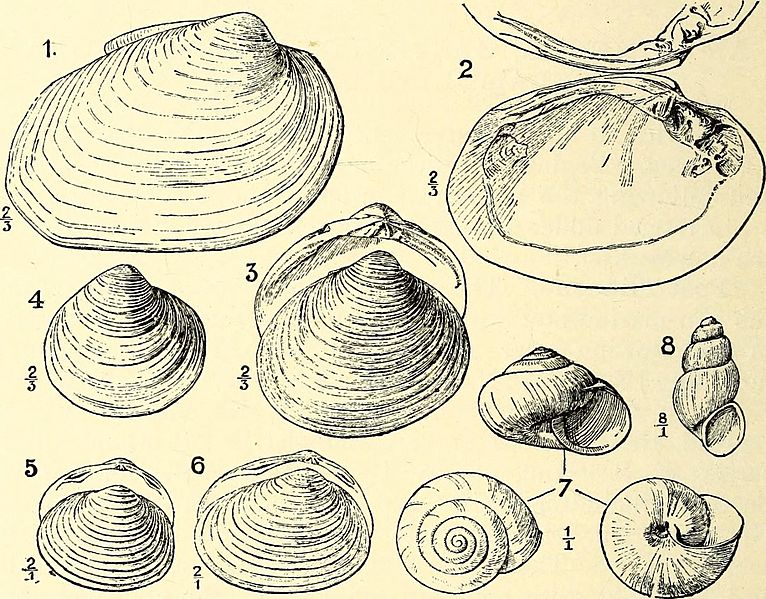Image: A guide to the fossil invertebrate animals in the Department of geology and palaeontology in the British museum (Natural history) (1907) (14592753318)

Description: Identifier: guidetofossilinv00brit (find matches) Title: A guide to the fossil invertebrate animals in the Department of geology and palaeontology in the British museum (Natural history) Year: 1907 (1900s) Authors: British Museum (Natural History). Dept. of Geology Bather, Francis Arthur, 1863- Subjects: Fossils Publisher: London, Printed by order of the Trustees Contributing Library: Smithsonian Libraries Digitizing Sponsor: Biodiversity Heritage Library View Book Page: Book Viewer About This Book: Catalog Entry View All Images: All Images From Book Click here to view book online to see this illustration in context in a browseable online version of this book. Text Appearing Before Image: the more important species, theletters IST, S, and E respectively denote the Northern,Southern, and Extinct forms :—Gastropoda: Bittium reticu-latum (S), Boreotrophon (Trophon) clathratum (N), Littorinalittorea (N), Neptunea antiqiuc (N), Tricolia (^Phasianella)pulla (S), Tritonofttsus Leckenhyi (E), Turritella comm.unis(N). Lamellibranchia: Acila (Nmidct) Cobholdim (E), Arealactea (S), Callista ( Venus) chione (S), Cerastoderma (Cardium) 128 GUIDE TO THE FOSSIL INVEETEBEATE ANIMALS. Gallery edule (N), Clilamys \Pecten\ opercidaris (S), Cyprina islandicaVIII. ^^-^^ Macoma (Tellina) halthica (N), Mya truncata (N),Scrobimlaria plana (S), Tridonta \Astarte\ ardica (N), Ven-tricola \_Vemis) casina (S).Central The non-marine series comprises shells of land andCase Al. fresh-water mollusca, found chiefly in river drifts andalluvium. These also are arranged under localities, of whichthe following are the more important: London and Essex(Fulham, Blackfriars, Admiralty Buildings, Lea Valley, Text Appearing After Image: Pig. 68.—Shells of Non-marine Mollusca from the Eiver-Drift of theLondon District. 1, 2, Unio littoralis; 3, 4, Corhicula fluminalis;5, Pisidium astartoides ; 6, P. amniciim; 7, Helix fruticum; 8, Paludes-trina (Hydrohia) marginata. (Lent by Mr. B. B. Woodward ; from hispaper in Proc. Geol. Assoc., London, XL, p. 335, 1890.) Copford, Walthamstow, Witham, liford, and Grays); Kent(Crayford and Crossness); Cambridgeshire (Barnwell andBarrington). Most of the species still live in England, buta few are altogether extinct. Thus of those depicted inFig. 68 only Fisidium amnicum remains; other extantspecies are Helix nemoralis, Jaminia (Ptopa) muscomim,Pomatias (Cyclostoma\ elegans, Bithynia tentaculata, Ancylusfluviatilis, and Neritina Jiuviatilis, among gastropods, withUnio tumidus and Anodonta cygnaea among lamellibranchs. MOLLUSCA (except CEPHALOPODA). 129 Pliocene. The shells are primarily arranged under theformations from which they come: the )^orwich Crag andthe Eed Crag, both of As Note About Images Please note that these images are extracted from scanned page images that may have been digitally enhanced for readability - coloration and appearance of these illustrations may not perfectly resemble the original work.
Title: A guide to the fossil invertebrate animals in the Department of geology and palaeontology in the British museum (Natural history) (1907) (14592753318)
Credit: https://www.flickr.com/photos/internetarchivebookimages/14592753318/ Source book page: https://archive.org/stream/guidetofossilinv00brit/guidetofossilinv00brit#page/n156/mode/1up
Author: Internet Archive Book Images
Permission: At the time of upload, the image license was automatically confirmed using the Flickr API. For more information see Flickr API detail.
Usage Terms: No known copyright restrictions
License: No restrictions
License Link: https://www.flickr.com/commons/usage/
Attribution Required?: No
Image usage
The following page links to this image:

